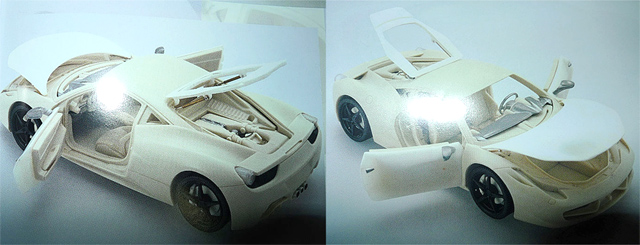Some operating system SKUs are hard-limited to run on a fixed number of CPUs. For example, Windows Server 2003 Standard Edition is limited to run on up to 4 CPUs. If you install this operating system on an 8-socket physical box, it runs on only 4 of the CPUs. The operating system takes advantage of multi-core CPUs so if your CPUs are dual core, Windows Server 2003 SE runs on up to 8 cores, and if you have quad-core CPUs, it runs on up to 16 cores, and so on.
Virtual CPUs (vCPU) in VMware virtual machines appear to the operating system as single core CPUs. So, just like in the example above, if you create a virtual machine with 8 vCPUs (which you can do with vSphere) the operating system sees 8 single core CPUs. If the operating system is Windows 2003 SE (limited to 4 CPUs) it only runs on 4 vCPUs.
Note: Remember that 1 vCPU maps onto a physical core not a physical CPU, so the virtual machine is actually getting to run on 4 cores.
This is an over simplication, since vCPUs are scheduled on logical CPUs which are hardware execution contexts. These can be a while CPU in the case of a single core CPU, or a single core in the case of CPUs that have only 1 thread per core, or could be just a thread in the case of a CPU that has hyperthreading.
Consider this scenario:
In the physical world you can run Windows 2003 SE on up to 8 cores (using a 2-socket quad-core box) but in a virtual machine they can only run on 4 cores because VMware tells the operating system that each CPU has only 1 core per socket.
VMware now has a setting which provides you control over the number of cores per CPU in a virtual machine.
This new setting, which you can add to the virtual machine configuration (.vmx) file, lets you set the number of cores per virtual socket in the virtual machine.
To implement this feature:
- Power off the virtual machine.
- Right-click on the virtual machine and click Edit Settings.
- Click Hardware and select CPUs.
- Choose the number of virtual processors.
- Click the Options tab.
- Click General, in the Advanced options section.
- Click Configuration Parameters.
- Include cpuid.coresPerSocket in the Name column.
- Enter a value (try 2, 4, or 8 ) in the Value column.Note: Ensure that cpuid.coresPerSocket is divisible by the number of vCPUs in the virtual machine. That is, when you divide cpuid.coresPerSocket by the number of vCPUs in the virtual machine, it must return an integer value. For example, if your virtual machine is created with 8 vCPUs, coresPerSocket can only be 1, 2, 4, or 8. The virtual machine now appears to the operating system as having multi-core CPUs with the number of cores per CPU given by the value that you provided in step 9.
- Click OK.
- Power on the virtual machine.
For example:
Create an 8 vCPU virtual machine and set cpuid.coresPerSocket = 2. Window Server 2003 SE running in this virtual machine now uses all 8 vCPUs. Under the covers, Windows sees 4 dual-core CPUs. The virtual machine is actually running on 8 physical cores.
Note:
- Only values of 1, 2, 4, 8 for the cpuid.coresPerSocket are supported for the multi-core vCPU feature in ESX 4.0.
- In ESX 4.0, if multi-core vCPU is used, hot-plug vCPU is not permitted, even if it is available in the UI.
- Only HV 7 virtual machines support the multi-core vCPU feature.
Important: When using cpuid.coresPerSocket, you should always ensure that you are in compliance with the requirements of your operating system EULA (Regarding the number of physical CPUs on which the operating system is actually running).
Update Apr 19
One good example is Windows Server 2003 Web Edition limited to 2 CPU sockets only, so if you assign 8 vCPUs, it will only see 2, by setting cpuid.coresPerSocket = 4 and assign 8 vCPUs, it means your server will have 2 CPU sockets and each socket will have 4 cores, so this manually override the default and allows you to have 8 CPUs technically speaking 8 Cores with Windows Server 2003 Web Edition which is previously impossible before ESX 4.1. 

















